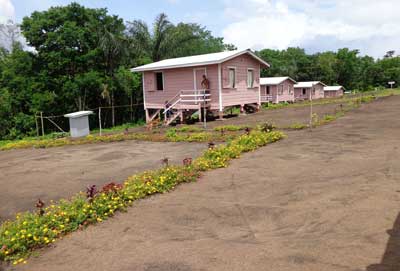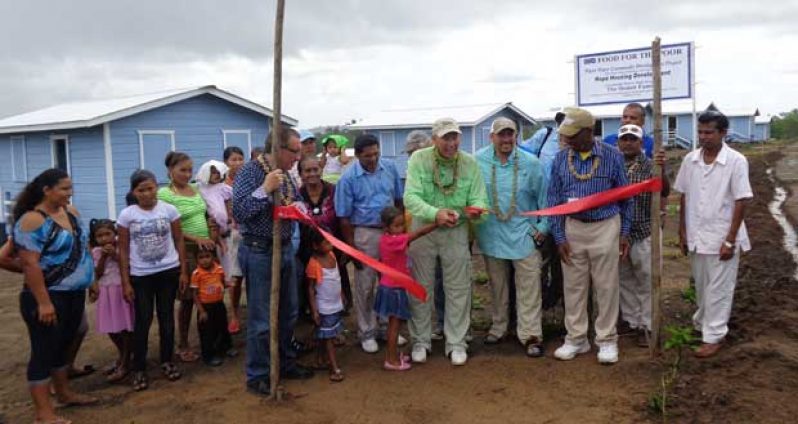FORTY families recently benefitted from the Food For The Poor (FFTP) humanitarian project, “Whitewater Community Development Project”, where forty houses were built for them.
According to Project Manager Andrea Benjamin, a visit to the community two years prior to the completion of the project resulted in an emotionally-driven spirit to aid in the development of the community.
She said that the economic situation appeared to be dire and the housing conditions were the worst she had seen.
MILK AND CHEESE LUXURIES
Parents told her that children had to walk forty-five minutes to get to school and that most days cassava bread was all they had to eat. Milk and cheese according to them are luxuries in the community.

She said also that Toshao Ernest Samuels had informed her that unemployment was an issue and most men ventured into the interior in search of jobs. Some of them walk for days to get there but they are underpaid and ill-treated, she was told.
Benjamin noted that she was made aware that the Government had provided assistance to the community but there was much more to be done. Therefore, upon her return to Georgetown, she began enlightening people about the current situation in the community and the lack of basic necessities.
The construction of the homes was then made possible through the generous donations of Chuck Stoner and his family through Food For The Poor (FFTP) Guyana, and their Miami and Toronto chapters.
The project which sought to alleviate poverty included the construction of forty homes for forty families in the community who according to Benjamin were in desperate need of a proper shelter. “The lack of walls and proper roofing exposed children to the elements of the weather,” she said.
Moreover, the community school was rehabilitated and a new library was installed, in hope of advancing educational involvement. A community centre was also developed to aid in promoting skills training. The project revealed that members of the community had expressed eagerness to teach and share with others but the lack of a facility had prevented this.
Benjamin explained that the initiative was taken after it was realised that families were moving closer to this part which is the centre of the community since they could access health and educational facilities and prevent children from having to walk miles everyday.
“The landscape of the community has changed. Where houses are there used to be wild vegetation. Prior to Food For The Poor’s intervention, there were few painted structures,” Benjamin said.
She described the project as one of the easiest she has done which came as a result of the dedication and willingness of the project staff and community members.
Meanwhile, she noted, since its completion women have been more involved in their communities and homes. “Women are eager to exhibit their contribution, whether it’s planting flower trees or decorating their kitchens. Children are delighted to have proper homes to go to,” she observed.
COMPUTERS NEXT
According to her the next move for FFTP in aid of fostering development for the community is to assist in the provision of computers for the school which will enhance the learning environment.
(By Ravin Singh)



.jpg)









